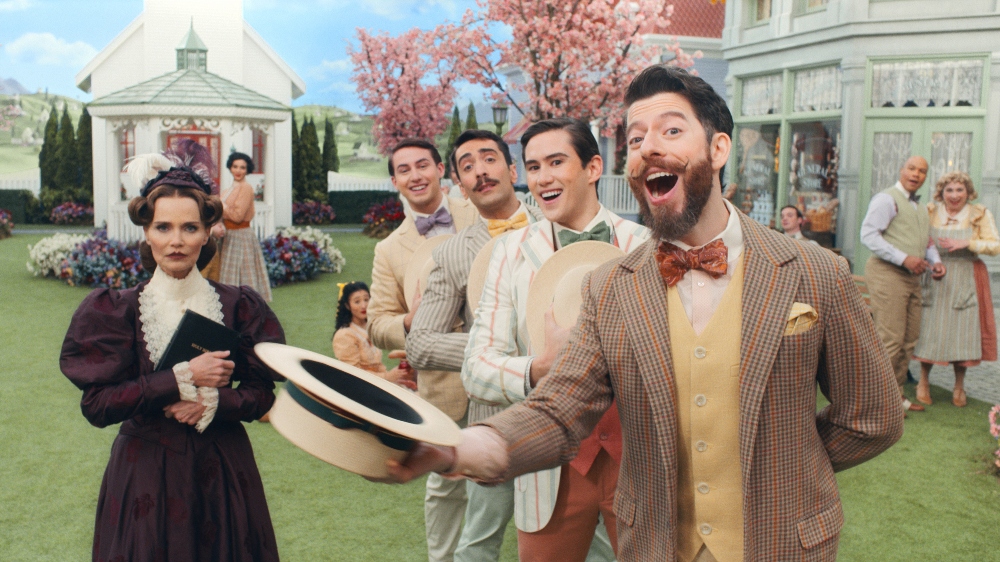
In a streaming landscape populated by prestige dramas and true-crime documentaries, few shows boast the joyous energy of Schmigadoon!, the Apple TV+ series starring Keegan-Michael Key, Cecily Strong, and Dove Cameron. While the grand musical numbers are likely what come to mind when most fans think about the show, Christopher Willis’ score goes hand-in-hand with the musical numbers written by creator Cinco Paul.
In Schmigadoon!, Key and Strong play a couple in a stagnant relationship. On a trip that is supposed to repair their relationship, the couple crosses a bridge that takes them to the land of Schmigadoon, a town that’s like a broken record of Golden Age musicals. To make matters worse, the couple is unable to leave until they find true love.
Willis’ score perfectly accompanies the musical numbers, and it’s not hard to see why Willis received one of the four Emmy nominations that Schmigadoon! earned this year. Below the Line recently spoke to Willis, who discussed his love for Golden Age Hollywood and recreating the sounds of that era, how his score gelled with the musical numbers, and what to expect from the recently-announced Season 2.
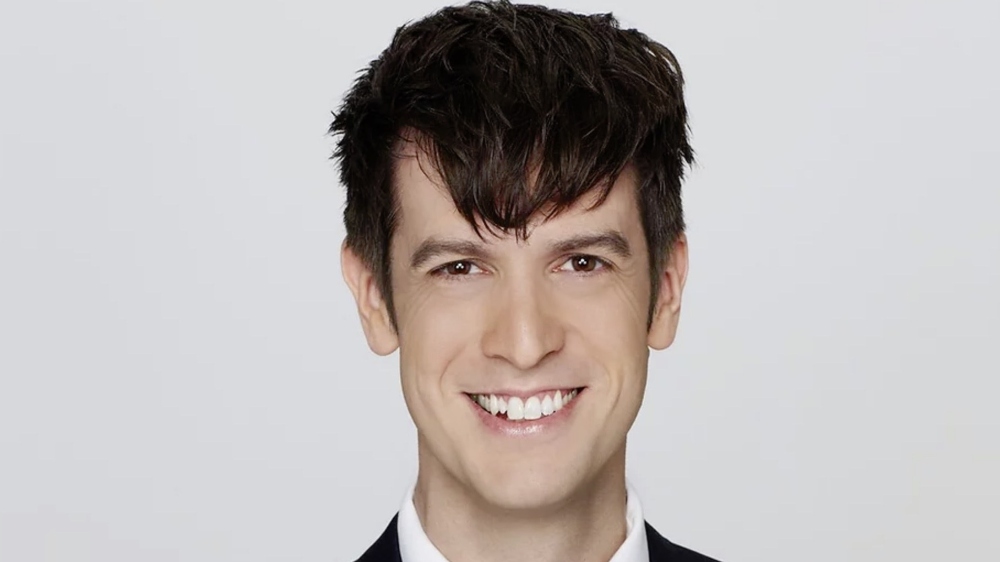
Below the Line: Congratulations on your Emmy nomination, I thought your work was really great in Schmigadoon! What are you most proud of with regard to this nomination and your contribution to the show?
Christopher Willis: Well, the show was just a joy to work on. It was unusual how joyful everything felt and I think the reason that it was like that is that it was very synergistic. I didn’t have a ton of time, as is very typical, but I was welcomed very warmly by the showrunner, Cinco Paul — and by the arrangers with whom he’d been working on the songs for quite a long time — David Chase, Doug Besterman, and the [music] producer, Scott Riesett. I’m so proud of what we achieved together.
At the end of the show, we of course wanted to have that homogeneity and unity of purpose that an old Rogers and Hammerstein musical would have. Even though I was doing the underscore and they were doing the arrangements, the music sometimes goes from one to the other imperceptibly and beyond just the musical team, I just feel [that] the show feels very unified; everybody had a unified purpose and it all comes together to tell this very specific story between the two main characters. I just feel the whole show has this unity and this sort of joy that we all felt as we were making it.
BTL: What were you pitched when you were brought on board?
Willis: Funnily enough, I heard the songs before I was hired because my wife, Elyse, who is a session singer here in LA, was hired to work on the demos. We both have old Hollywood leanings, and she was hired six months before I knew anything about the project. So while she was working on the songs, I was hearing them and we were both absolutely wowed by Cinco [Paul]’s songwriting — we didn’t know anything about him as a songwriter — so it was very revelatory and we were very intrigued. Who are these people? What is this show? It’s so funny and everything is so well-crafted.
That would’ve been in the summer of 2020, and then I was contacted in the fall, while Cinco was shooting. He and I were discussing the music right as he was in the thick of shooting the show and he had heard a bunch of my music for Disney and for other things. He had heard me doing deep dives into other older styles, thinking about the history of Hollywood. I’ve done some music for Disneyland, too, and I’ve thought a lot about the history of Disney and those early decades of Disneyland, which is related [since] we are talking about the 1950s [and the] 1960s. We had a great time talking about a lot of those things and our shared love of the music of that era.

BTL: So you mentioned that some of the songs were already arranged — or maybe all of them — by the time you were brought on. Did you have any hand in the musical numbers?
Willis: Oh, they were well underway. I would say by the time I came on board, I was able to join a conversation that was already happening. David, Doug, and I were able to start talking about all of the great masterpieces of that time and looking at the scores together. I think that the songs were finally recorded around the same time as the underscore was recorded. But generally speaking, the arrangements were written first and I was attempting to dovetail with them, rather than the other way.
BTL: So I was just going to ask you about the dovetailing you mentioned, how much influence did the musical numbers have on what you were composing?
Willis: Definitely. There were places where I knew I have to be in [a certain] key and in [line with] this emotion here. It was sort of like docking something in space like in Apollo 13; I have to make sure I arrive at exactly the right chord. If the song begins with a particular juicy Hollywood chord, I have to find the juicy Hollywood chord that logically comes just before that, so we were talking a lot and enjoying that same world of music; the muted strings, and the woodwind writing, and we were talking about a lot of the same things as we were working on our two respective sides. And we were on opposite sides of the states, I should say, because the song arranges are based in New York because they are legendary Broadway guys, and they actually recorded the songs in New York as well. I’m over here in Hollywood and I ended up recording the score in Hollywood. So actually, the dovetailing is literally not the same musicians; it’s literally [happening] across the country [laughs].
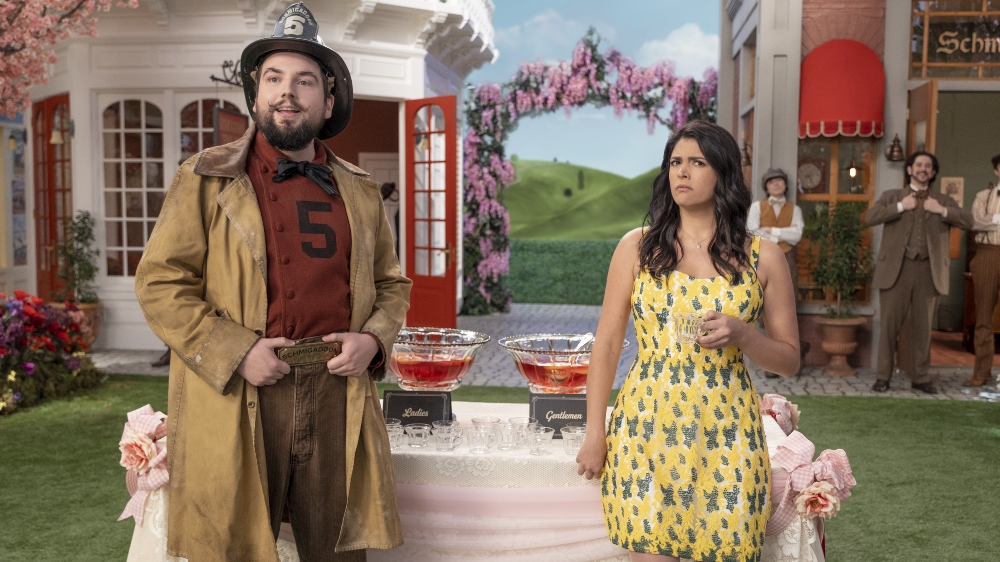
BTL: You clearly have a love for old Hollywood music, so can you describe how you replicated that sound? What goes into that? Is it specific instruments being used, or the way the songs are written?
Willis: For me, it’s all about winding the clock back. In the old Hollywood montages, the pages of the calendar flying off — or in this case, flying on — or the dials on a clock spinning around, and putting yourself in the situation of being in the mid-1950s and thinking about the things that people were listening to and thinking about then. The arrangers and the songwriters that we’re talking about were going to the opera [and] the symphony and their record collections would’ve been very different from what’s in our playlists.
You have to sort of remember that rock-and-roll hadn’t happened and that EDM hadn’t happened, so really, I suppose they were very high-minded. And you can tell it in their harmonies and in the decisions they make [that] they are clearly listening to Italian and German opera and they want what they’re doing to be very sumptuous. And they’re taking these song melodies, by, say, Rogers and Hammerstein, and they’re weaving them almost into a symphony, into something very lush.
The mindset is a lot about trying to turn back the clock and not to listen to just what they did and copy it but to imagine what they were thinking and to listen to the things that they listened to, and to clear your mind of things that hadn’t happened yet in music history. I often find that some of the textures are quite simple, but they’re just always making very careful decisions.
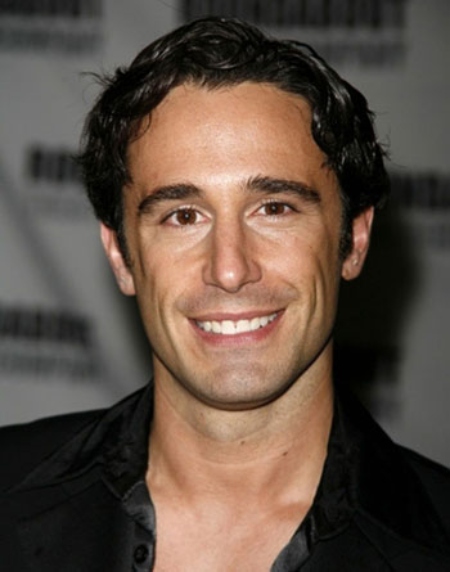
A lot of the top people in Hollywood at the time, working on those movies — Carousel, for instance — [were] Hollywood musicians. You’ve got Alfred Newman and Nelson Riddle working on it; a lot of these incredible people. So even when the task they’re given is quite simple — which is just to take the melody and do it sort of simply for strings or for a woodwind instrument — they’re making their decisions incredibly carefully so every instrument is playing in a range that’s really beautiful. And every change of texture is carefully considered. We might go up high but in a very beautiful, well-considered way, then we might go down in the same way. No decision in those movies is automatic, and I think a lot of that gives you a million small decisions. Like those gives you that feeling. But then, of course, we come to the orchestra itself and their way of playing — they’re used to the string players playing very romantically. They would slide up and down.
I was very lucky. The lead concept master of my orchestra was Roger Wilke, who is one of the great session violinists of all time. He’s led the orchestra for countless movies for John Williams, [among] other people, and Roger loves old Hollywood just as much as I do so we talked about that kind of thing and he would do these expressive movements that we tend to not do so much in music. Now, orchestras in movies tend to play in a more minimalistic way — there’s a sort of simplicity to the way we play now — but in the old days they would vibrato more, they would slide up and down more. A lot of it is just leaning into those kinds of things and if you love the way we do it, it’s just a fun treat. Getting the chance to do all of that is like eating desserts or something.
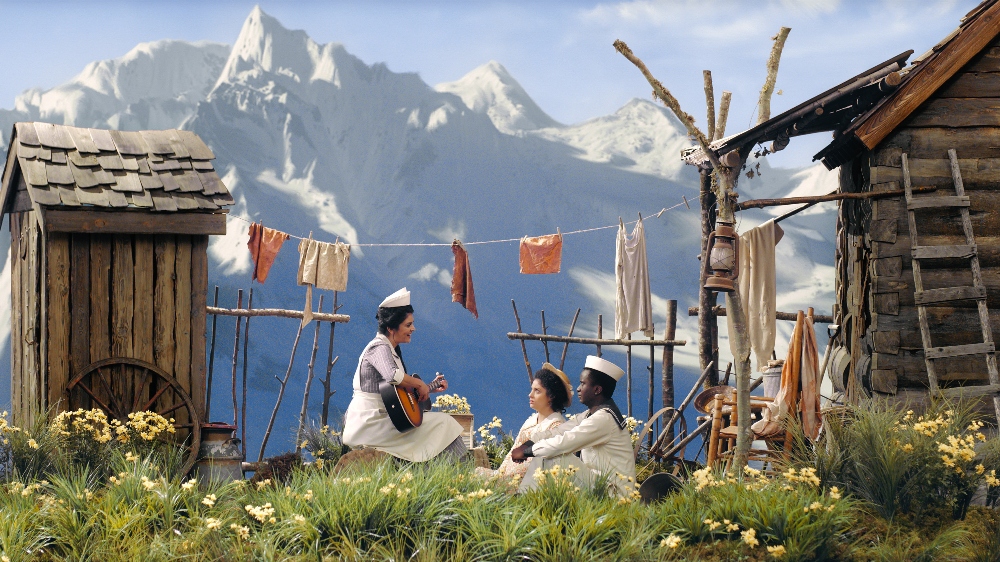
BTL: This may sound like an ignorant question, but as someone not as well-versed in music as you are, I noticed a lot of horns in your score. But they sound like they’re from the 1940s/’50s era that you were talking about. Is that because you used older horn instruments or a certain technique that you used?
Willis: That’s not an ignorant question at all. I think I know the effect that you mean, and it’s not the instruments themselves, generally, it’s probably the mutes that are used. The history of jazz is partly the history of all of the bizarre contraptions that you put in the brass instruments and you had all these companies inventing different kinds of mutes and even musicians using found objects. So you’ve got a Harmon mute, which is this funny shape and like a cartoon trumpet coming out of the main trumpet. The very weird one, you’ve got musicians using bowl hats as mutes or using a toilet plunge. No one’s ever invented something better than a toilet plunger as a plunger mute, so they buy a toilet plunger and they take the stick off and they just use the rubber part. A lot of those conjure up those kinds of memories that I think you’re having.
One of them might sound like the ’30s, one of them might sound like the ’40s; very interesting, wonderful sounds. They all conjure up different moods from that time and again, I suppose we have to cast our minds back and think there were no computers, there was no electronic music but jazz bands and arranging and all of those instruments, they were the coolest thing in pop culture, so people were doing all kinds of crazy things with them and reinventing them and coming up with these wild sounds. So the whole of popular music at that time had these kaleidoscopic colors that were all weird experiments people were doing on their instruments.
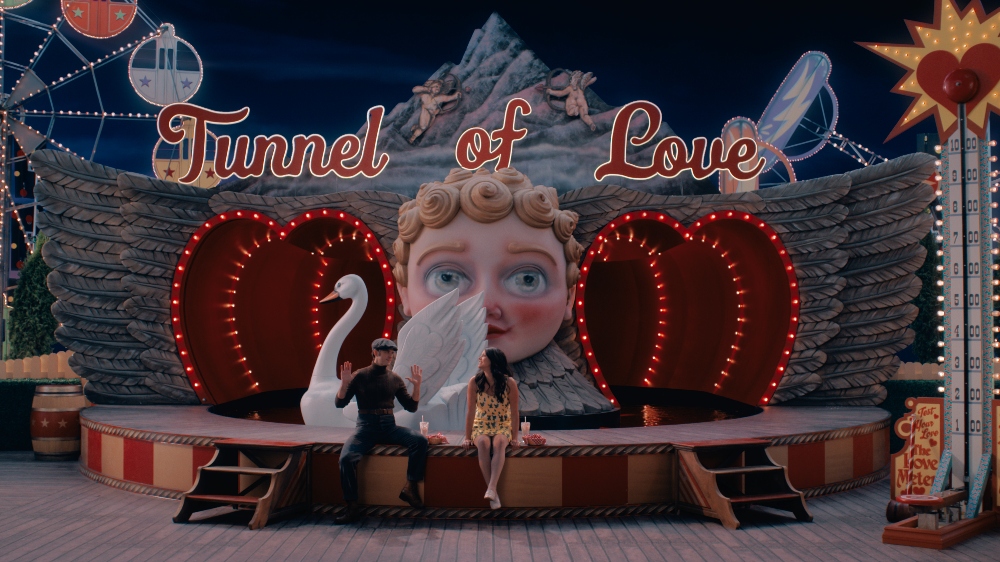
BTL: Do you have any favorite musical number from Schmigadoon! or a scene where you feel that your score really shines?
Willis: My favorite score moment [is] when the two main characters cross the bridge for the first time and I go from the modern score into the old score. The show is not set in the ’50s, it’s set now, but the couple gets into this weird, magical world. [When] we start the show in a modern world, the score of all of that is contemporary, and as they cross the bridge, the score morphs from one to the other. We are deep in the world of sound design and guitars and synths, and then this haze of smoke crosses over them, and when they come out of the haze of fog when [on] the other side, suddenly it has this MGM orchestra-scent.
So I had a lot of fun doing that, but I should say [that] my favorite thing in the whole show is “With All of Your Heart,” which is the dance number in the schoolhouse with the kids tap dancing on their desks. I just think that’s one of the most joyful things I’ve ever seen in my life. I bow down before Christopher Gattelli, the choreographer, [and] I just think that’s absolutely wonderful.
BTL: I believe I saw that there’s a second season of Schmigadoon! in the works. Are you working on that right now?
Willis: I haven’t seen anything yet, but I’m very excited. I believe they’re almost done with shooting right now and I know what the concept is, and I’m extremely excited because I think it’s wonderful, but I haven’t started yet myself. I’m about to start doing some research into it because it requires me to learn some new things, which is very exciting.
Season 1 of Schmigadoon! is now streaming on Apple TV+.





